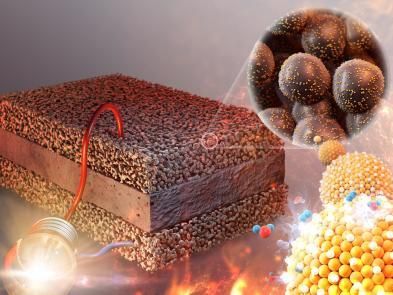Cerium Oxide Nanotubes Get Noticed
Advertisement
Chemists and materials scientists often study "nanotubes" - capsule-shaped molecules only a few nanometers in width. In nanotube form, many materials take on useful, unique properties, such as physical strength and excellent conductivity. Carbon nanotubes are the most widely investigated variety. Now, in pioneering research, scientists at the U.S. Department of Energy's Brookhaven National Laboratory have created and investigated the properties of nanotubes made of a different, yet equally interesting material: cerium oxide.
"Cerium oxide nanotubes have potential applications as catalysts in vehicle emission-control systems and even fuel cells," says Brookhaven chemist Wei-Qiang Han, the lead scientist involved in the work. "But until very recently, they haven't been studied."
Han and his colleagues are in the midst of ongoing research into the structure and properties of cerium oxide nanotubes. As part of this, they have devised a method to synthesize cerium oxide nanotubes of high quality. First, they allow the compounds cerium nitrate and ammonia hydroxide to chemically react. Initially, this reaction forms "one-dimensional" nanostructures, such as rods and sheets, made of the intermediate product cerium hydroxide. The intermediate product is then quickly cooled to zero degrees Celsius, which freezes those structures into place. By letting the chemical reaction proceed over a long period of time, a process called "aging," the hydrogen is eventually removed from the intermediate product and a large quantity of the desired end product - cerium oxide nanotubes - is formed.
Most read news
Topics
Organizations
Other news from the department science

Get the chemical industry in your inbox
By submitting this form you agree that LUMITOS AG will send you the newsletter(s) selected above by email. Your data will not be passed on to third parties. Your data will be stored and processed in accordance with our data protection regulations. LUMITOS may contact you by email for the purpose of advertising or market and opinion surveys. You can revoke your consent at any time without giving reasons to LUMITOS AG, Ernst-Augustin-Str. 2, 12489 Berlin, Germany or by e-mail at revoke@lumitos.com with effect for the future. In addition, each email contains a link to unsubscribe from the corresponding newsletter.






























































